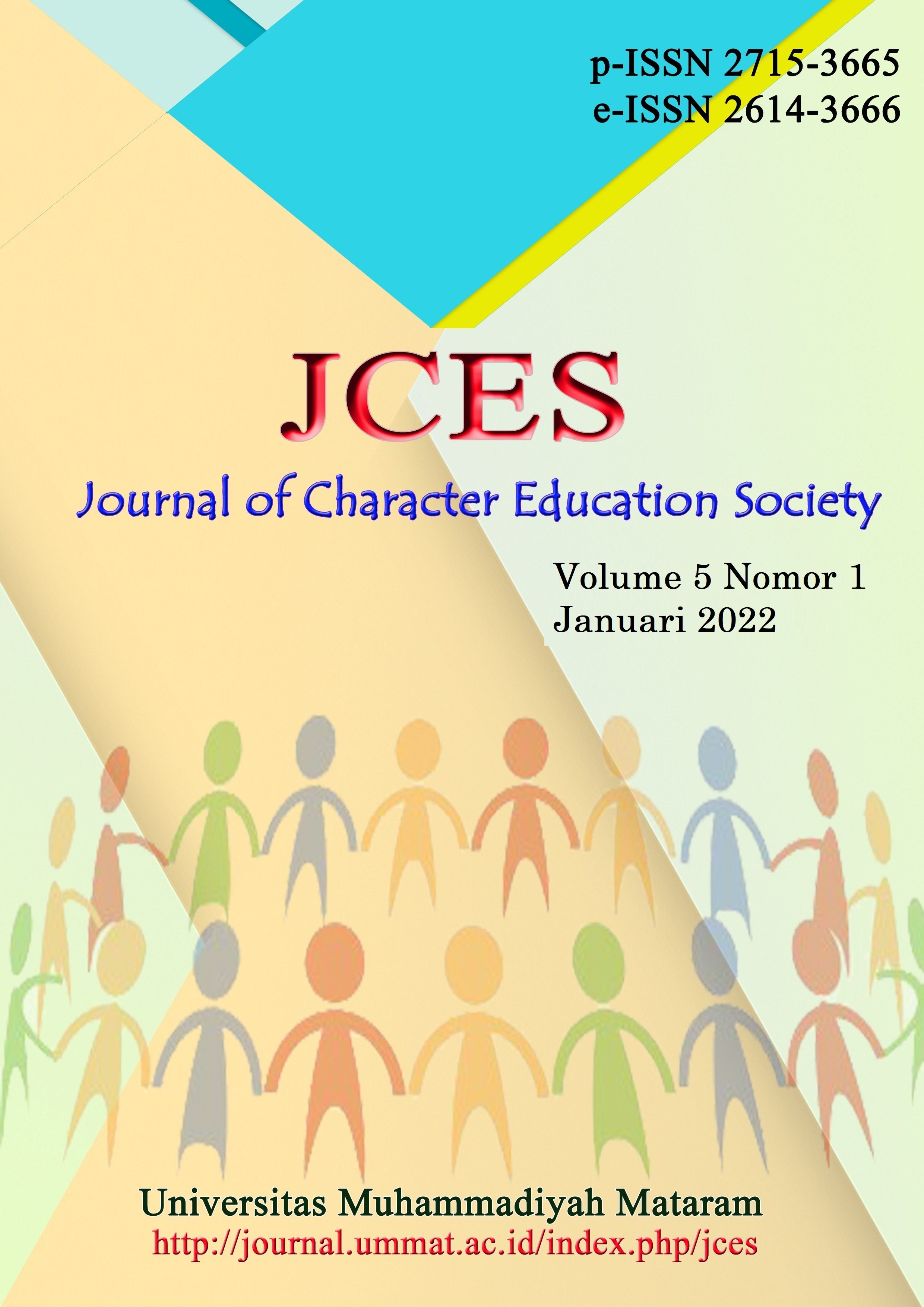PENGUKURAN STATUS GIZI PADA ANAK PRA SEKOLAH DI TK ASISYAH VII KOTA PEKANBARU
DOI:
https://doi.org/10.31764/jces.v5i1.6766Keywords:
Sosialisasi, Pengukuran Status Gizi, TB/U, BB/U, IMT/U.Abstract
Abstrak: Anak prasekolah adalah anak berusia dua sampai lima tahun. Rentang usia tersebut merupakan periode emas seorang anak dalam pertumbuhan dan perkembangan. Anak Indonesia merupakan generasi penerus untuk melanjutkan kegiatan pembangunan bangsa. Pemantauan tumbuh kembang anak usia prasekolah merupakan fase yang penting karena dapat menentukan kualitas kesehatan, kesejahteraan, pembelajaran dan perilaku di masa mendatang. anak yang memiliki awal tumbuh kembang yang baik akan tumbuh menjadi dewasa yang lebih sehat, hal ini dipengaruhi oleh hasil interaksi faktor genetik dan faktor lingkungan, sehingga nantinya memiliki kehidupan yang lebih baik. Pengukuran status gizi anak dapat dilakukan dengan pemeriksaan Antropometri. Tujuan dari pengabdian masyarakat terpantaunya tumbuh kembang anak (Antropometri) sehingga dapat mencegah terjadinya penyimpangan pertumbuhan dan perkembangan secara dini. Metode pelaksanaan kegiatan secara garis besar meliputi tahapan sosialisasi, pemeriksaan TB, BB dan Lila. Setelah dilakukan pemeriksaan TB, BB dan Lila telah diperoleh hasil yaitu BB/U gizi baik 43, gizi lebih 1, gizi kurang 4. TB/U normal 47, tinggi 1, IMT/U kurus 3, gemuk 4, obesitas 2. Normal 39. Perlu dilakukan kegiatan pemantauan secara terus menerus dan pendampingan berkelanjutan untuk mencegah masalah-masalah yang dialami anak bisa teratasi.
Abstract: Preschoolers are children aged two to five years. This age range is a golden period of a child in growth and development. Indonesian children are the next generation to continue nation-building activities. Monitoring the growth and development of preschool-aged children is an important phase because it can determine the quality of health, well-being, learning and behavior in the future. Children who have a good early growth and development will grow into healthier adults, this is influenced by the result of the interaction of genetic factors and environmental factors, so that later they have a better life. Measurement of children's nutritional status can be done with anthropometric examination. The purpose of community service is to monitor children's growth and development (anthropometry) so that they can prevent early growth and development deviations. The method of carrying out activities in general includes the stages of counseling, examination of WAZ, HAZ, BAZ. After examination for WAZ, HAZ, BAZ and MUC, the results obtained were WAZ good nutrition 43, over nutrition 1, under nutrition 4. HAZ normal 47, height 1, BAZ thin 3, fat 4, obese 2. Normal 39 MUC weighs less than 1, normal 47. It is necessary to carry out continuous monitoring activities and ongoing assistance to prevent problems experienced by children from being resolved.
References
Andriani & Wirjatmadi. (2012). PERANAN GIZI DALAM SIKLUS KEHIDUPAN. (KENCANA, Ed.) (Edisi Pert). Jakarta: PRENADAMEDIA GROUP.
Chamidah. (2018). Deteksi Dini Gangguan Pertumbuhan dan Perkembangan Anak. https://doi.org/https://doi.org/10.21831/jpk.v4i3.789
Hadi, A. (2021). Obesitas dan Melek Gizi. (Epigraf Komunikata Prima, Ed.). Gentan, Baki,Sukoharjo. Retrieved from https://www.google.co.id/books/edition/Obesitas_dan_Melek_Gizi_Intervensi_Peer/ZV1EEAAAQBAJ?hl=id&gbpv=1&dq=Anak+yang+terkategori+obesitas+sangat+berpotensi+mengalami+masalah+kesehatan&pg=PR9&printsec=frontcove
Jahjuli, A. (2019). Profil Kesehatan Provinsi Riau.
KEMENKES. (2015). Kesehatan dalam Kerangka Sustainable Development Goals (SDGs). In Rakorpop Kementerian Kesehatan RI (p. 24). Retrieved from http://www.pusat2.litbang.depkes.go.id/pusat2_v1/wp-content/uploads/2015/12/SDGs-Ditjen-BGKIA.pdf
Kemenkes RI. (2011). KEPMENKES RI Tentang Standar Antropometri Penilaian Status Gizi Anak. Jornal de Pediatria.
Kusumaningtiar. (2017). Pengukuran Status Gizi dan Sosialisasi Gizi Seimbang Pada Anak Panti Asuhan Tebet Yayasan Remaja Masa DEpan. In Jurnal Abdimas (Vol. 4, pp. 18–23).
Mufdilah, dkk. (2021). Penentu Kualitas Generasi. (CV Budi Utama, Ed.) (Edisi 2021). Yogyakarta.
Oswari, H. dkk. (2016). Kiat Membuat Anak Sehat, Tinggi dan Cerdas. (I. D. A. Indonesia, Ed.). Jakarta.
Prastiwi. (2019). Pertumbuhan Dan Perkembangan Anak Usia 3-6 Tahun. In Jurnal Ilmiah Kesehatan Sandi Husada (Vol. 10, pp. 242–249). https://doi.org/10.35816/jiskh.v10i2.162
Putri, dkk. (2016). Pemeriksaan Pertumbuhan dan Personal Hygiene. In Jurnal Akses Pengabdian Indonesia Vol 1 No 1: 55 – 64, 2016 PEMERIKSAAN (Vol. 1, pp. 55–64).
Sugihartiningsih. (2019). Tumbuh Kembang Anak Pra Sekolah. Retrieved from https://ejournal.stikespku.ac.id/index.php/mpp/article/view/37/33
Susilawati, dewi. (2018). Tes dan Pengukuran. (I. Safari, Ed.) (Cetakan Ke). Sumedang: upi Sumedang Press. Retrieved from https://www.google.co.id/books/edition/Tes_dan_Pengukuran/nkZMDwAAQBAJ?hl=id&gbpv=1&dq=Pelaksanaan+pengukuran+antropometri&pg=PA57&printsec=frontcover
United Nations Children’s Fund (UNICEF). (2013). IMPROVING CHILD NUTRITION The achievable imperative for global progress.
Wahyuni, dkk. (2020). Komunitas Kebidanan. rreferensi mahasiswa kebidanan. (R. Watrianthars, Ed.). Yayasan Kita Menulis.
Downloads
Published
Issue
Section
License
Authors who publish articles in JCES (Journal of Character Education Society) agree to the following terms:
- Authors retain copyright of the article and grant the journal right of first publication with the work simultaneously licensed under a CC-BY-SA or The Creative Commons Attribution–ShareAlike License.
- Authors are able to enter into separate, additional contractual arrangements for the non-exclusive distribution of the journal's published version of the work (e.g., post it to an institutional repository or publish it in a book), with an acknowledgment of its initial publication in this journal.
- Authors are permitted and encouraged to post their work online (e.g., in institutional repositories or on their website) prior to and during the submission process, as it can lead to productive exchanges, as well as earlier and greater citation of published work (See The Effect of Open Access).

